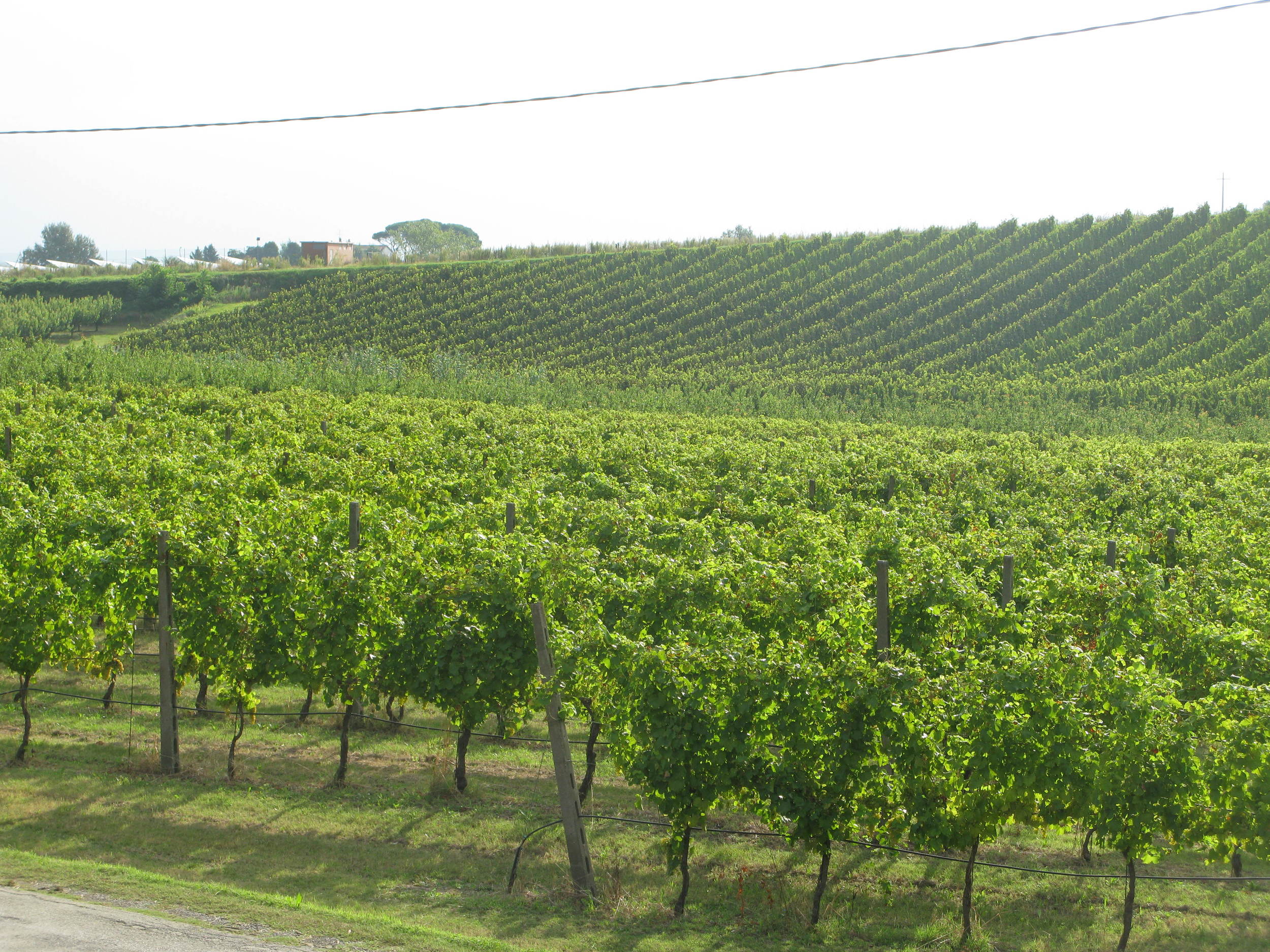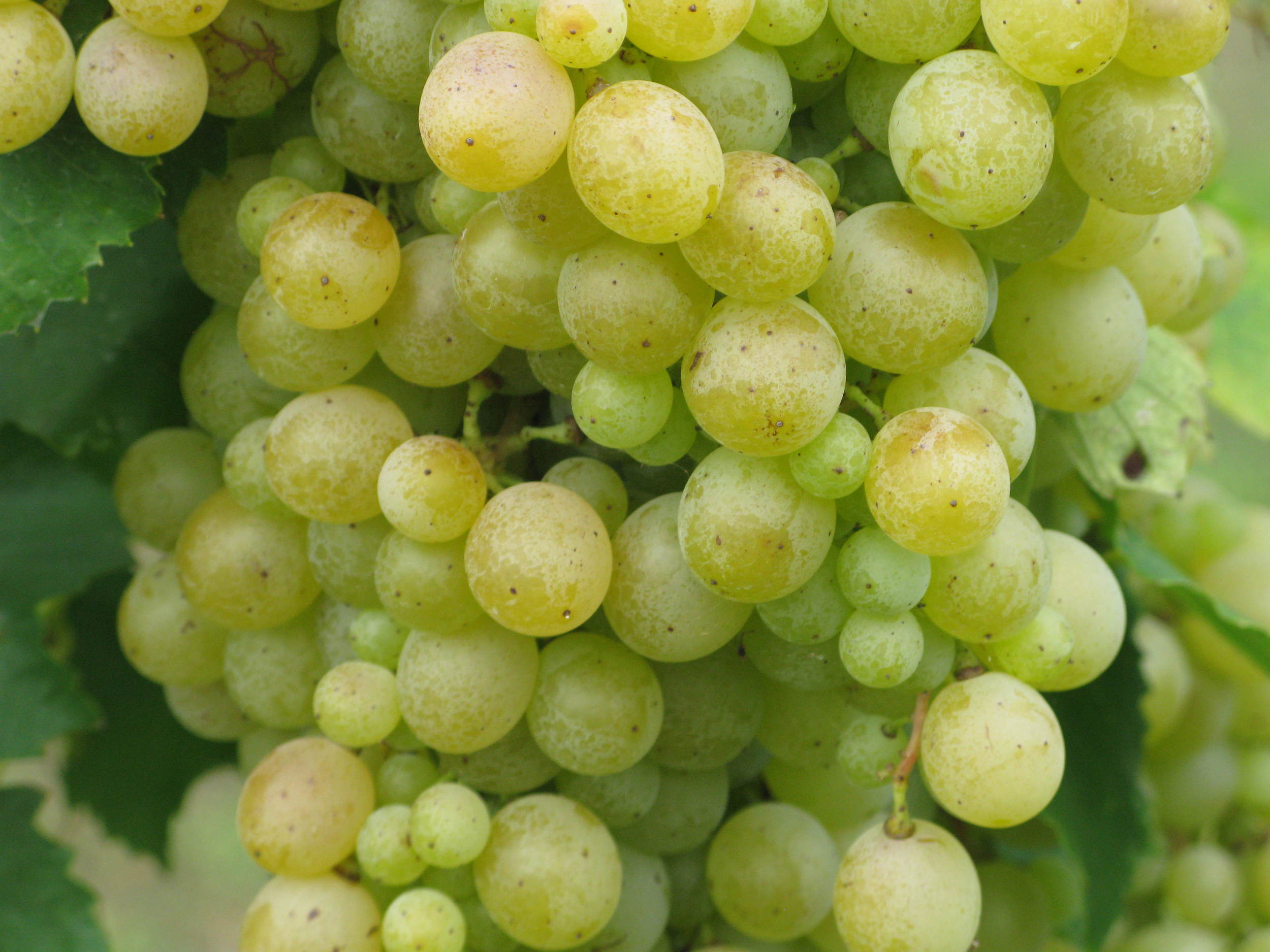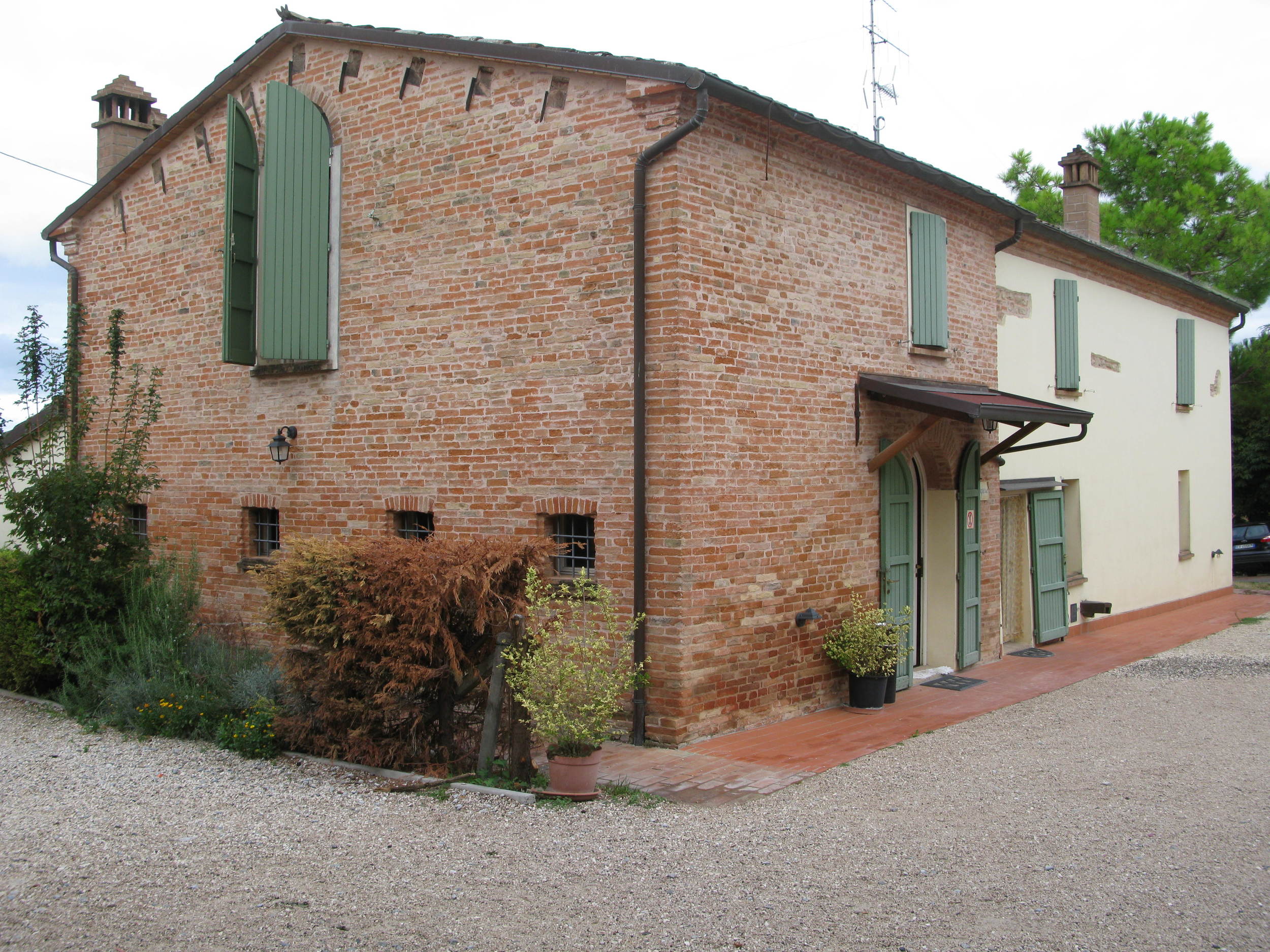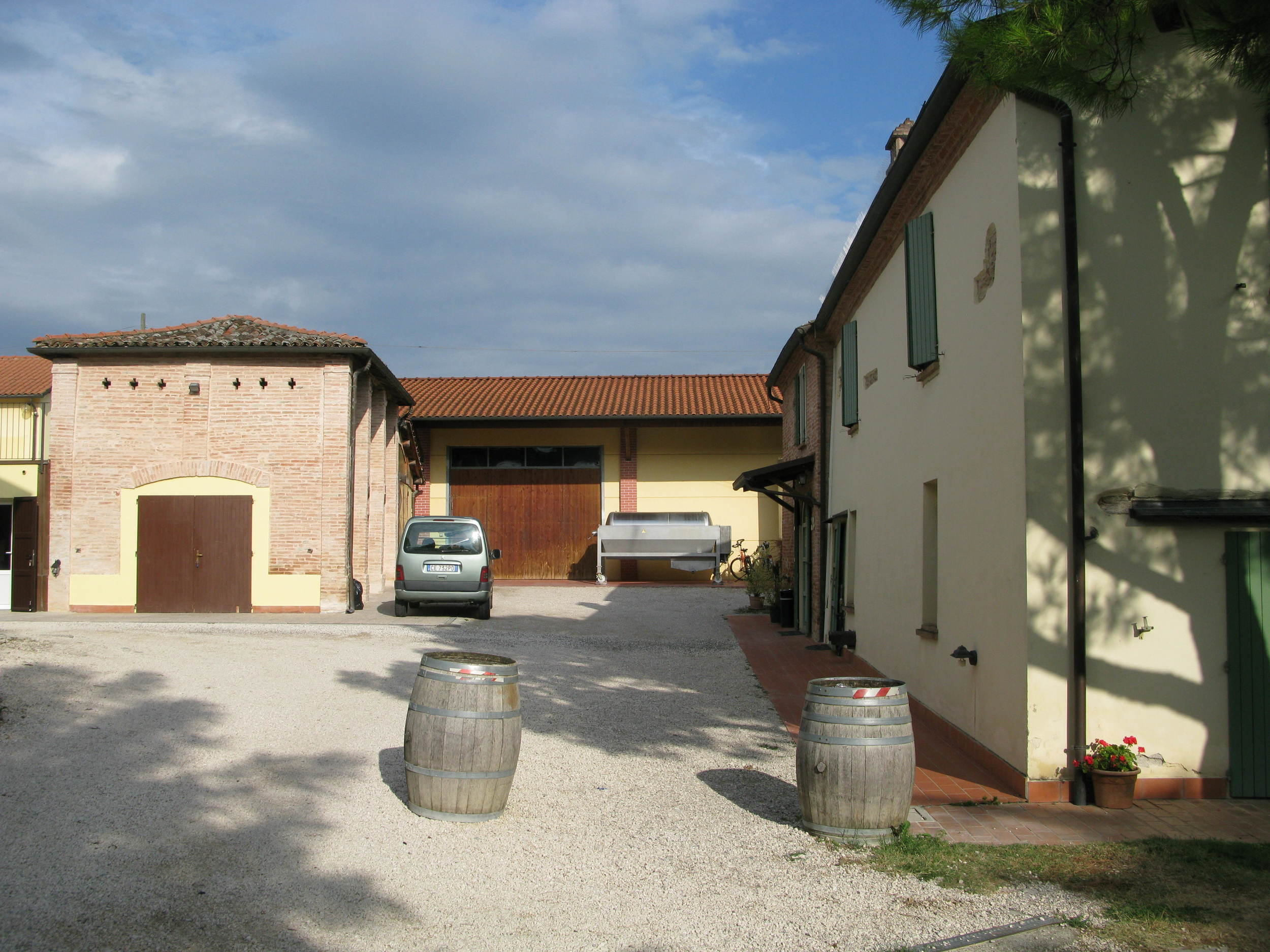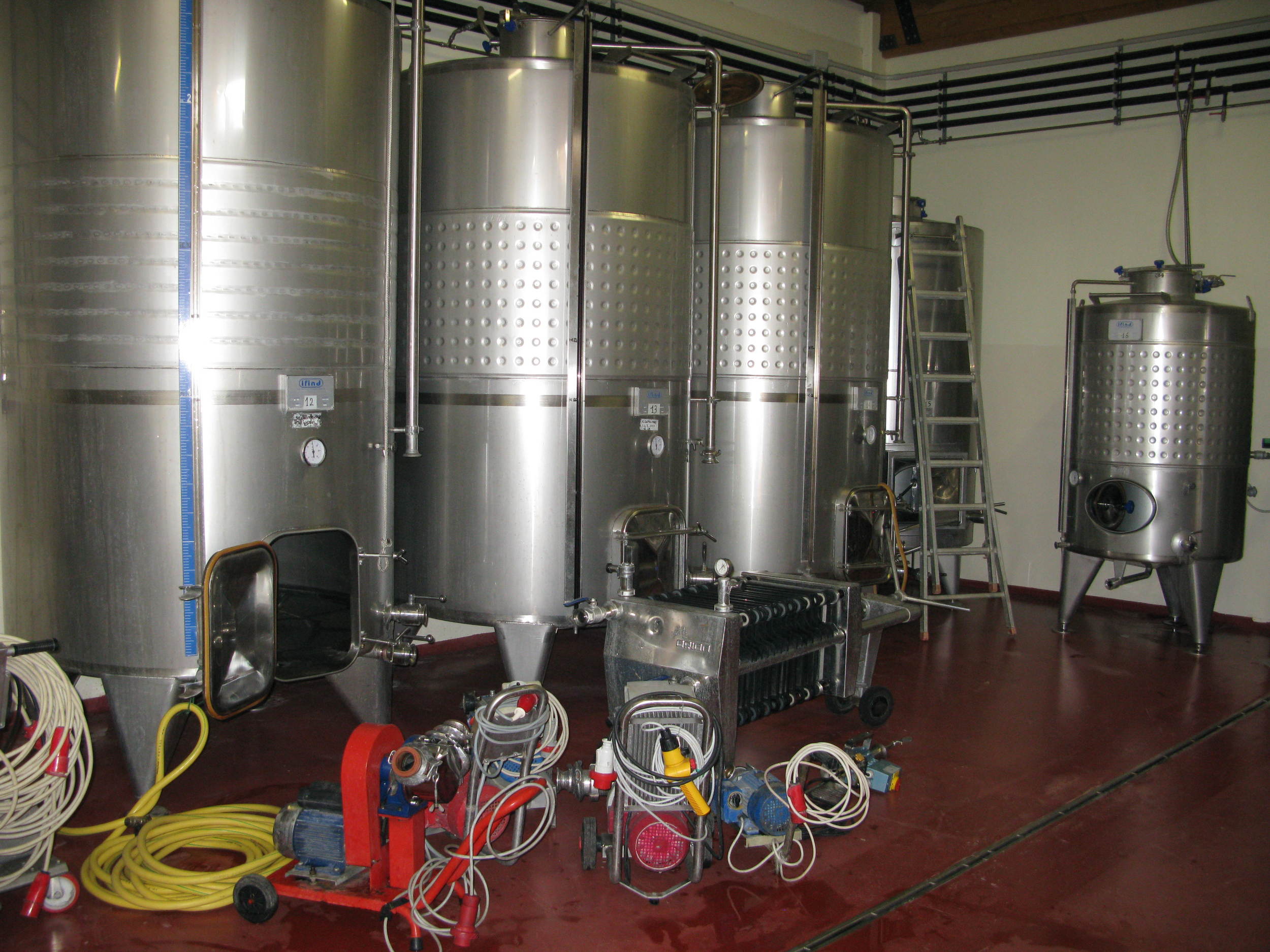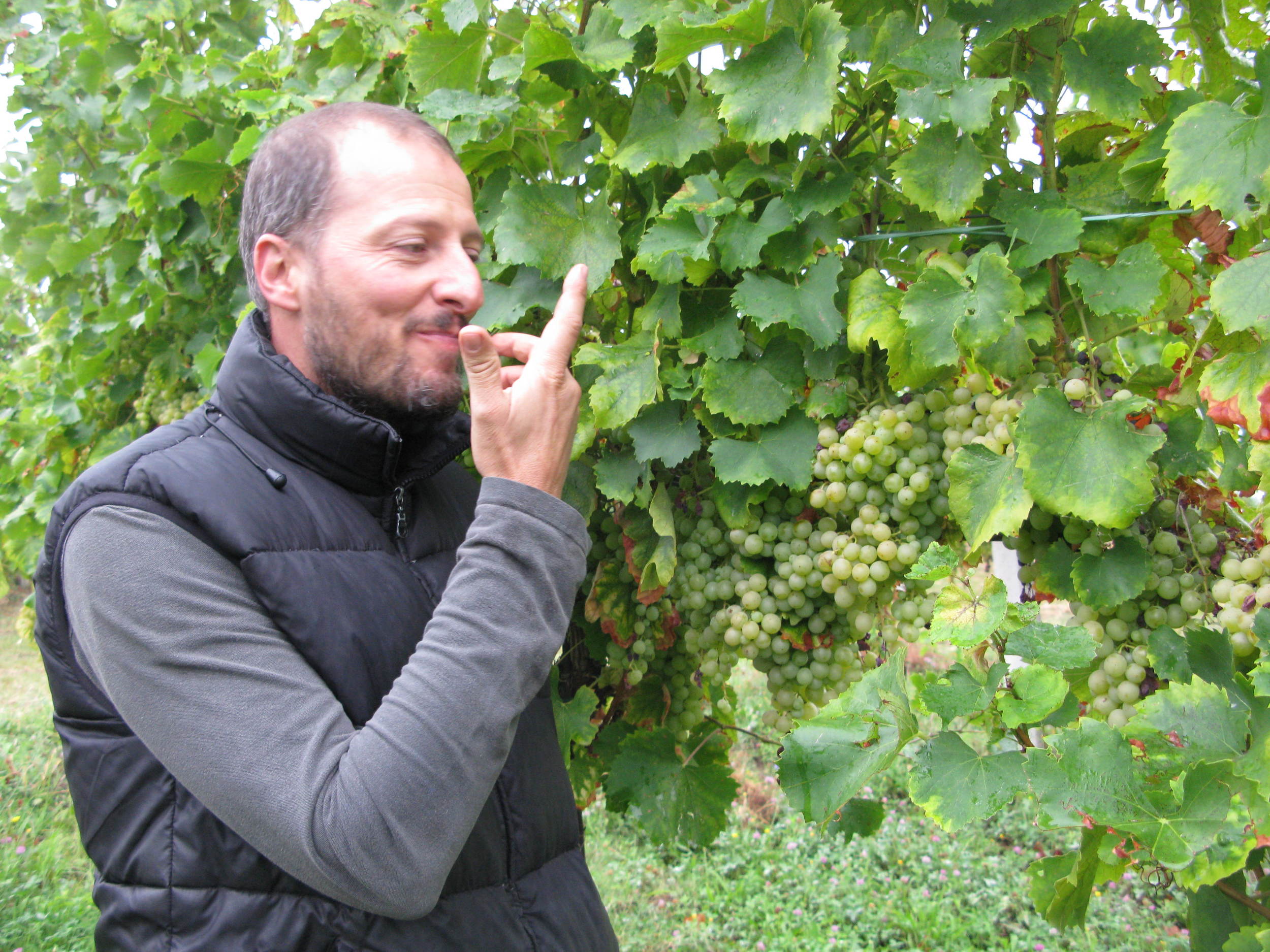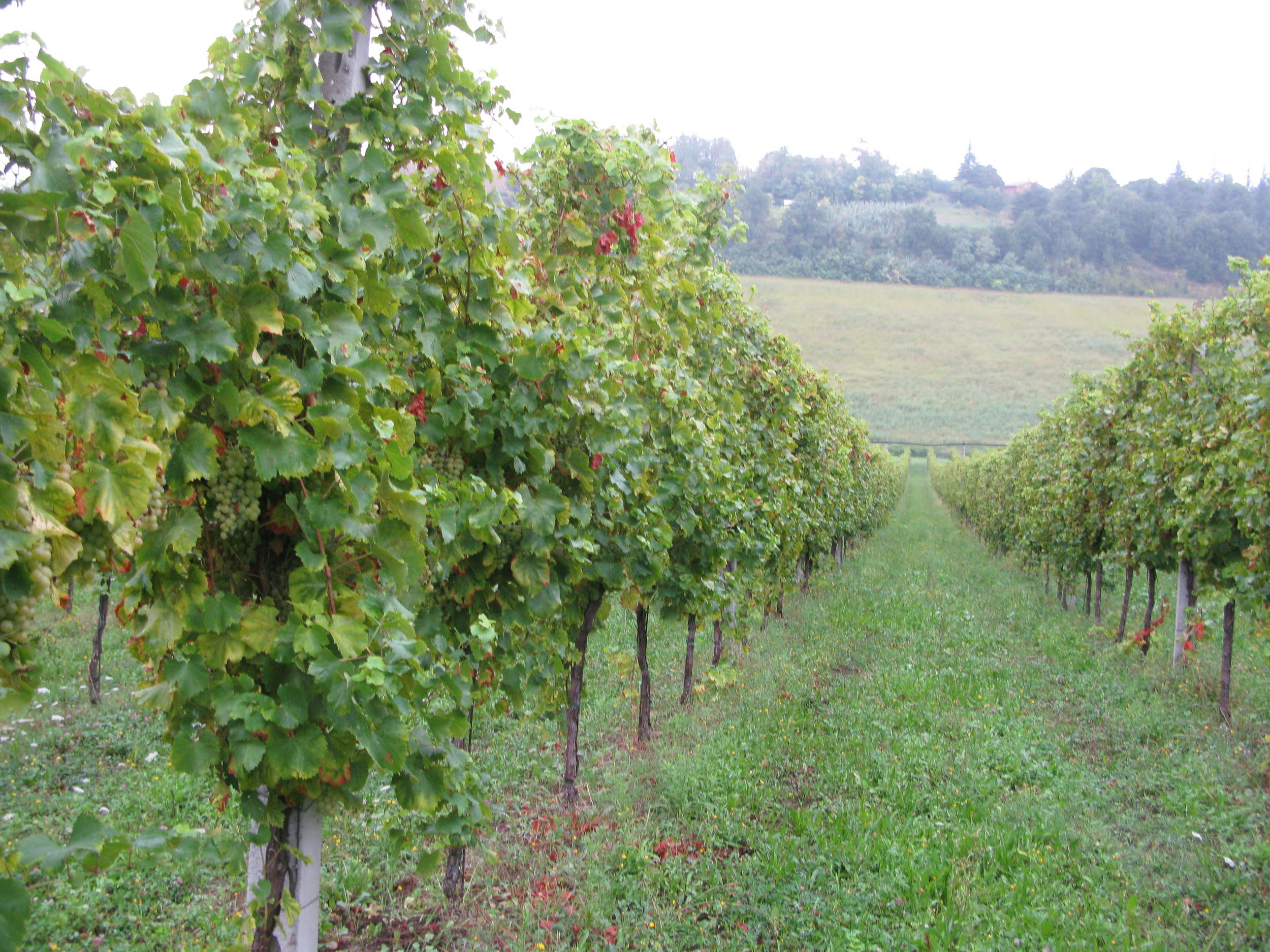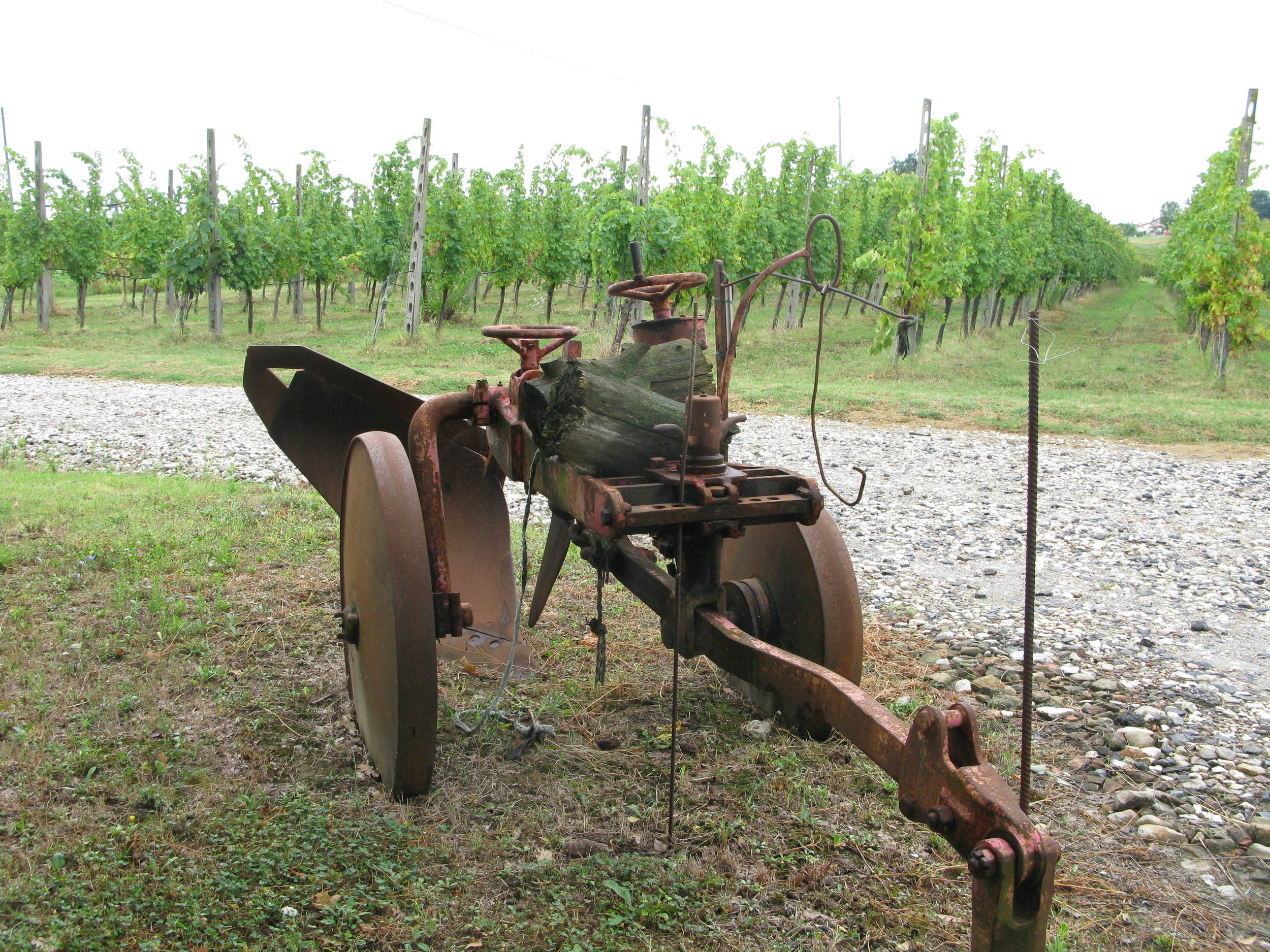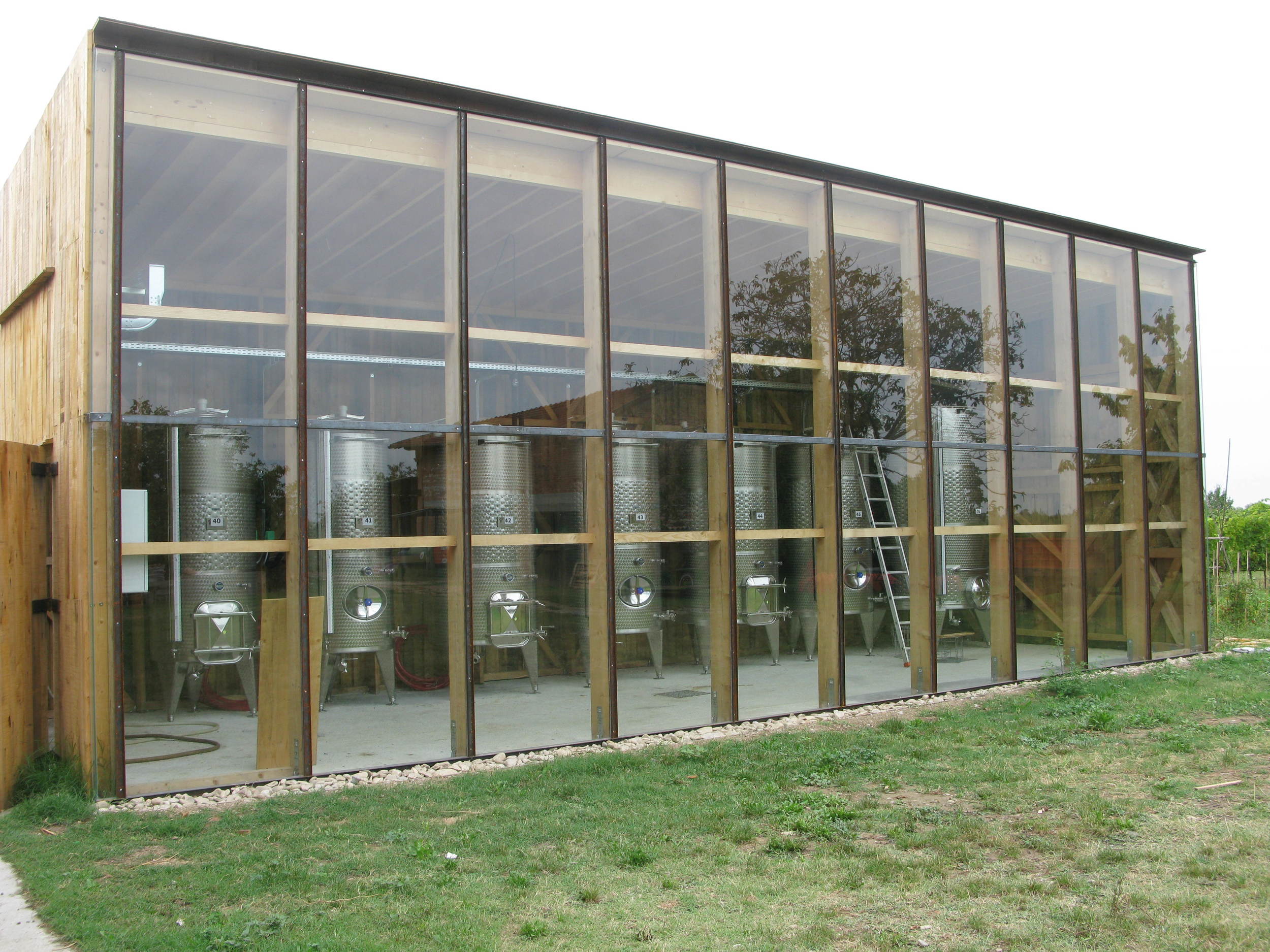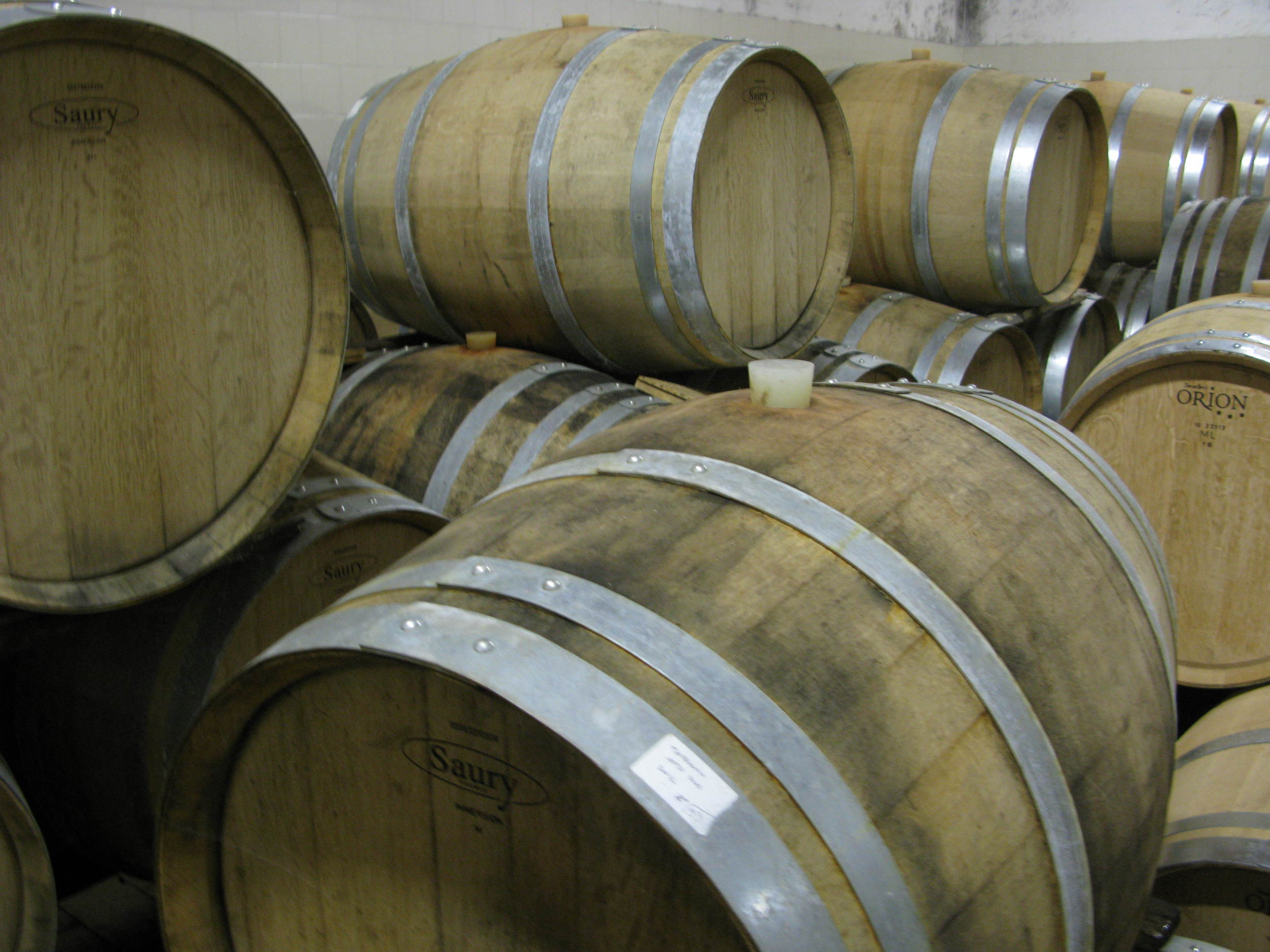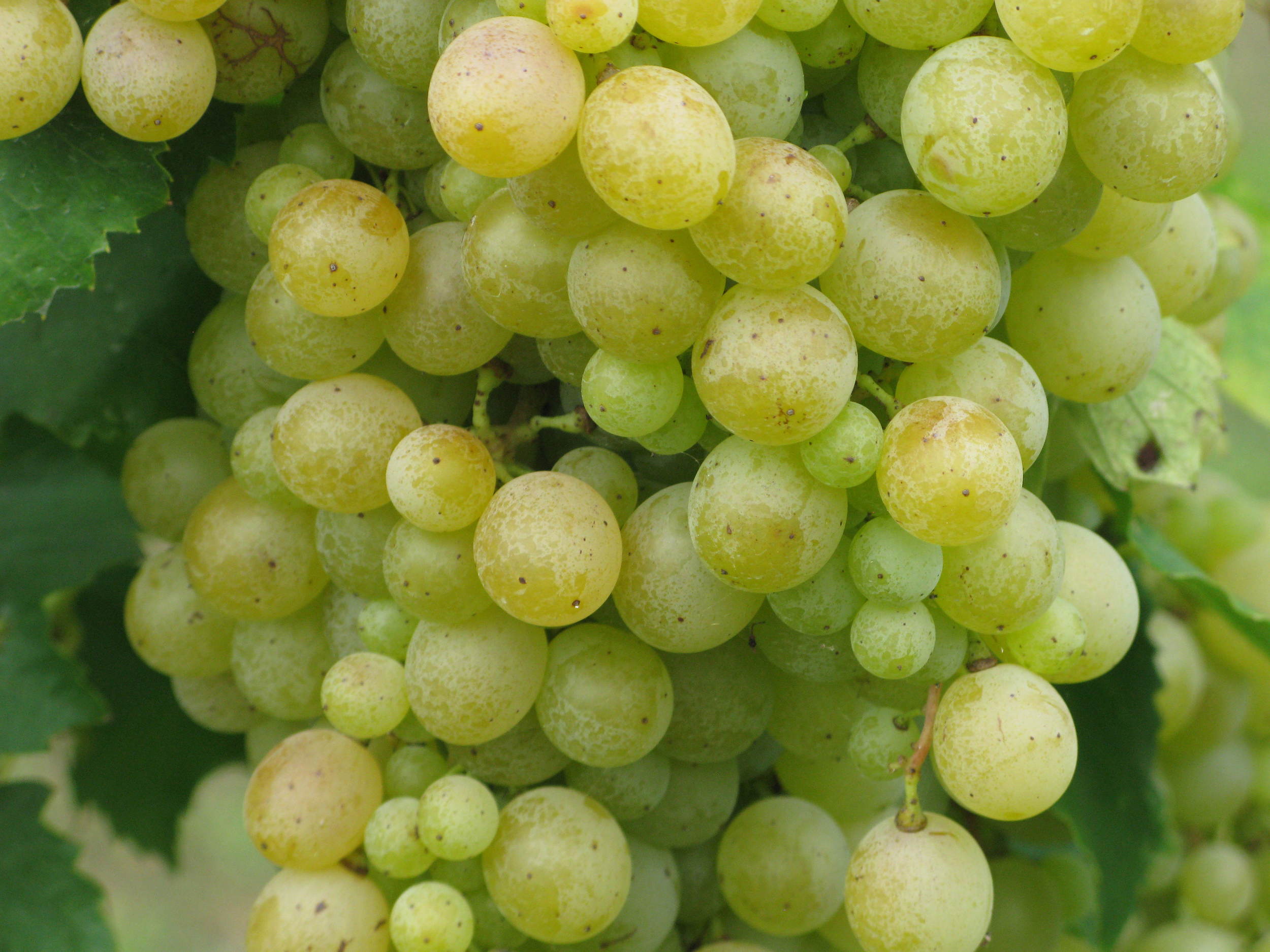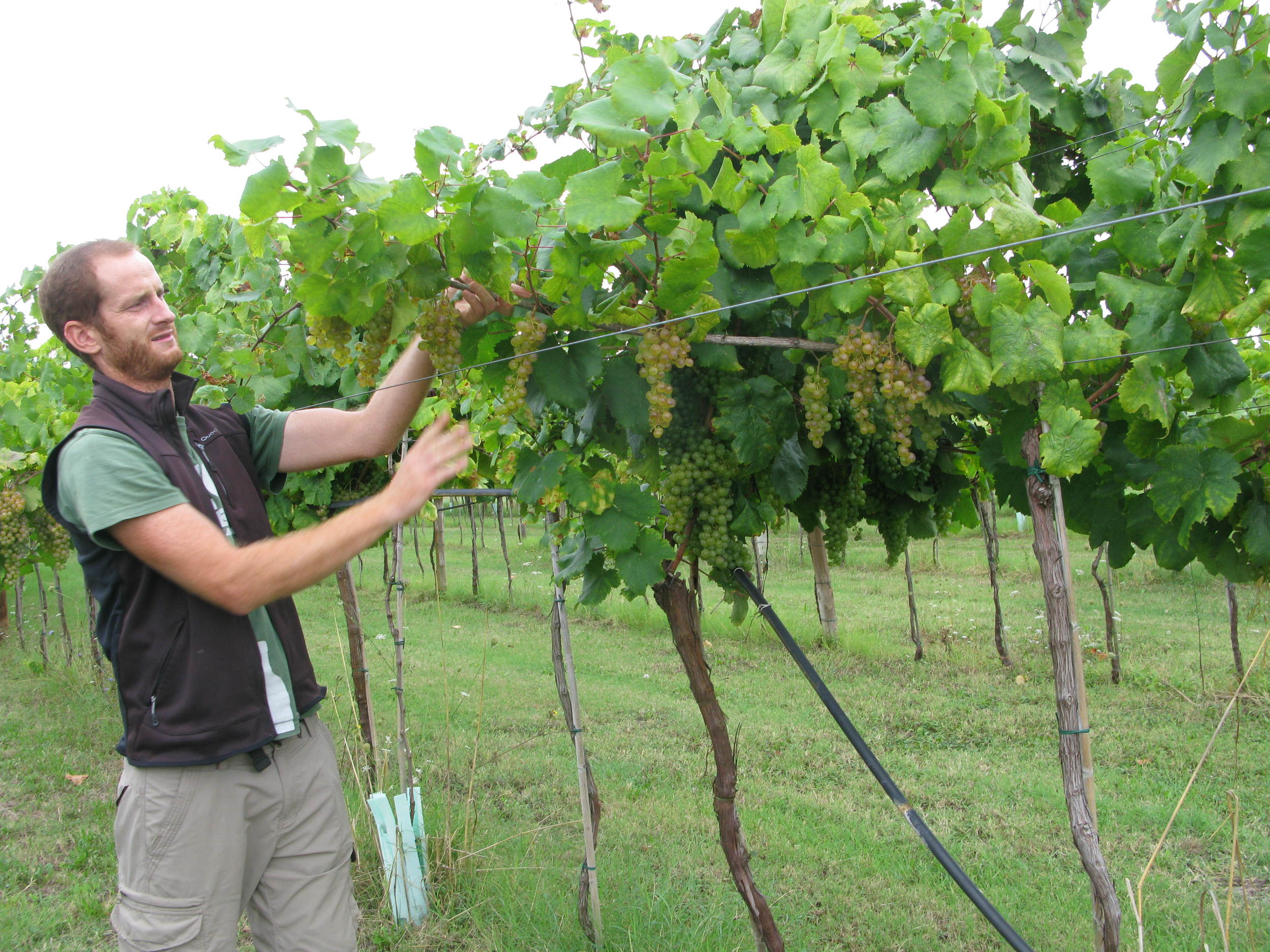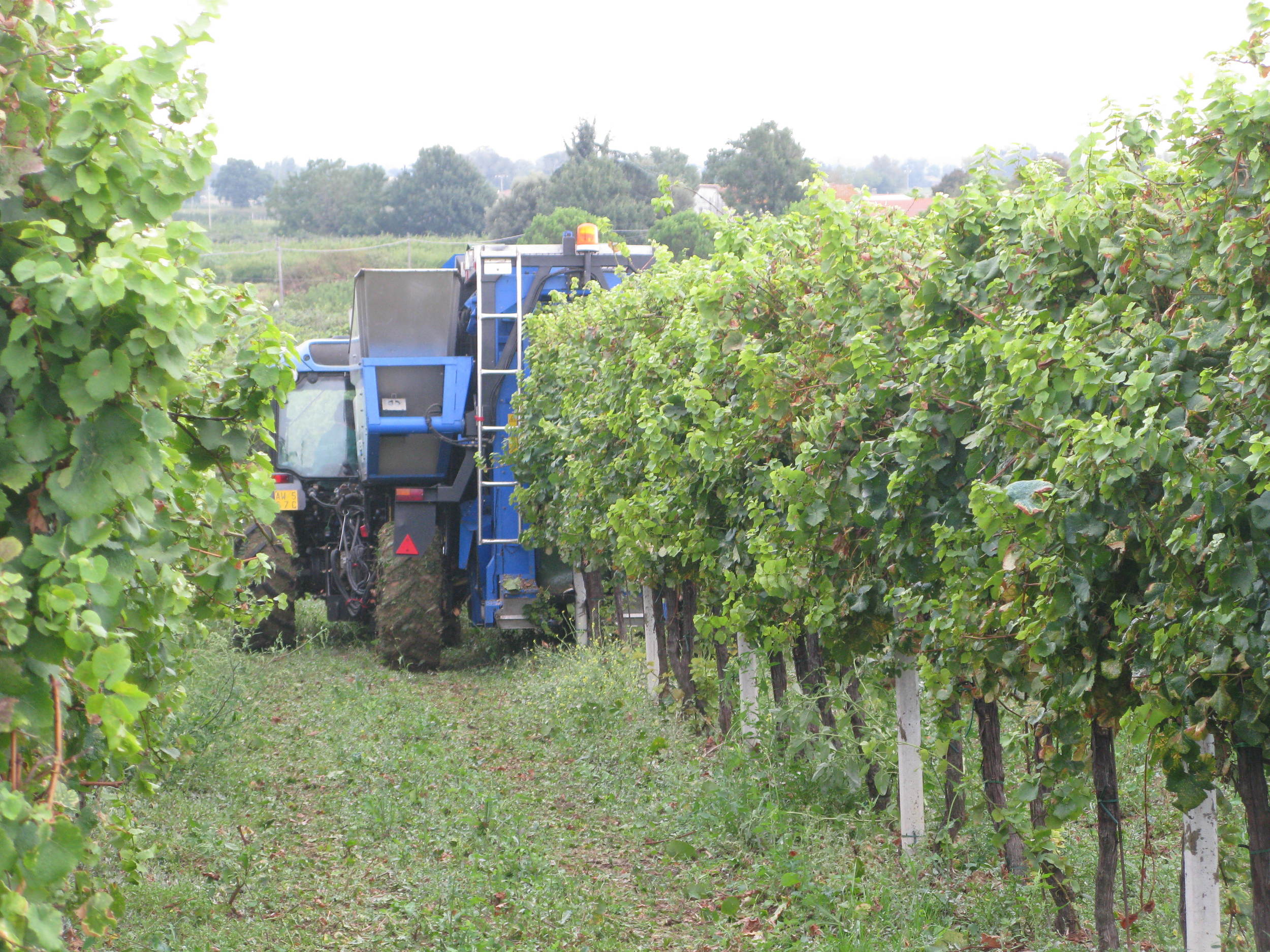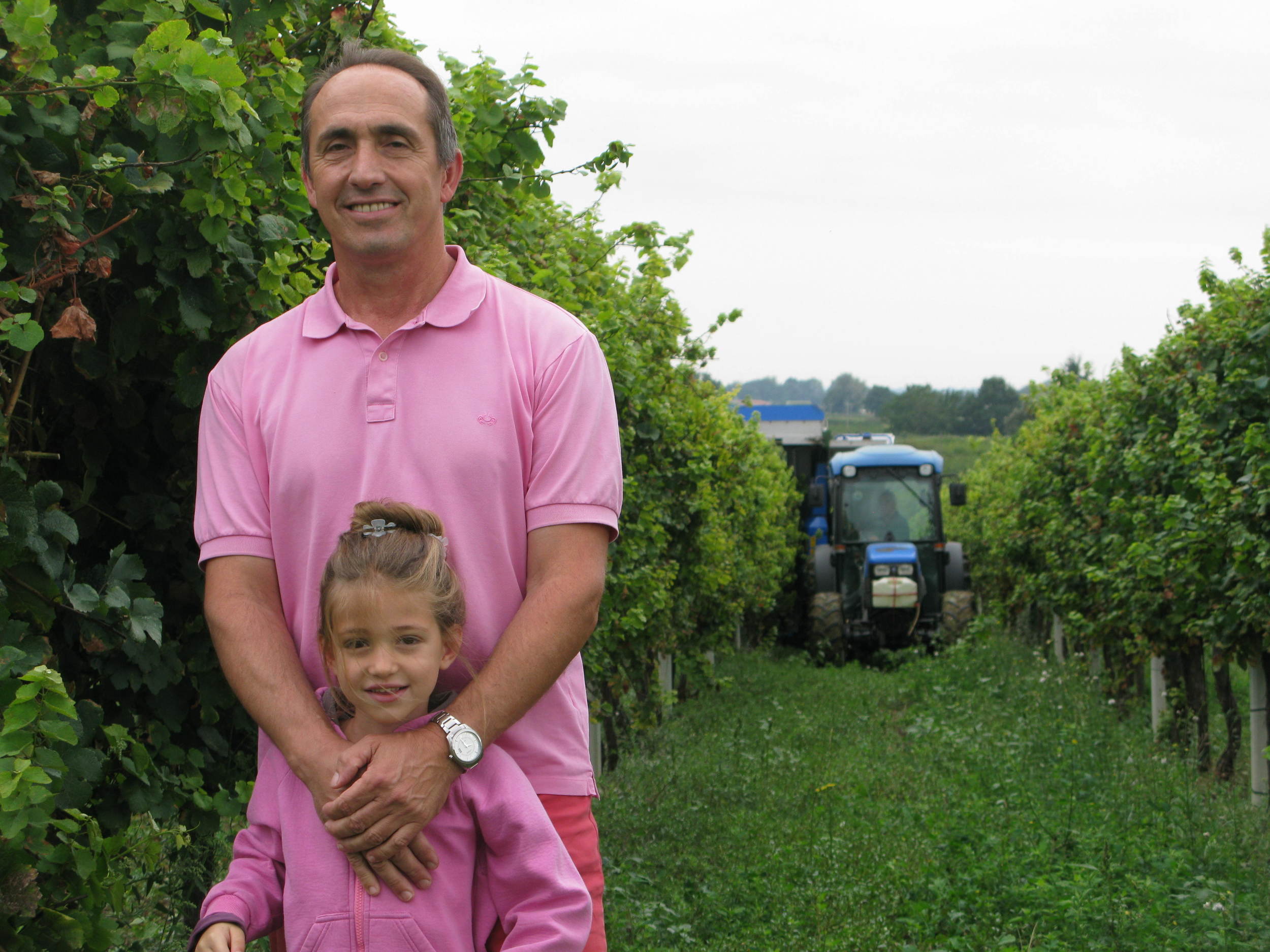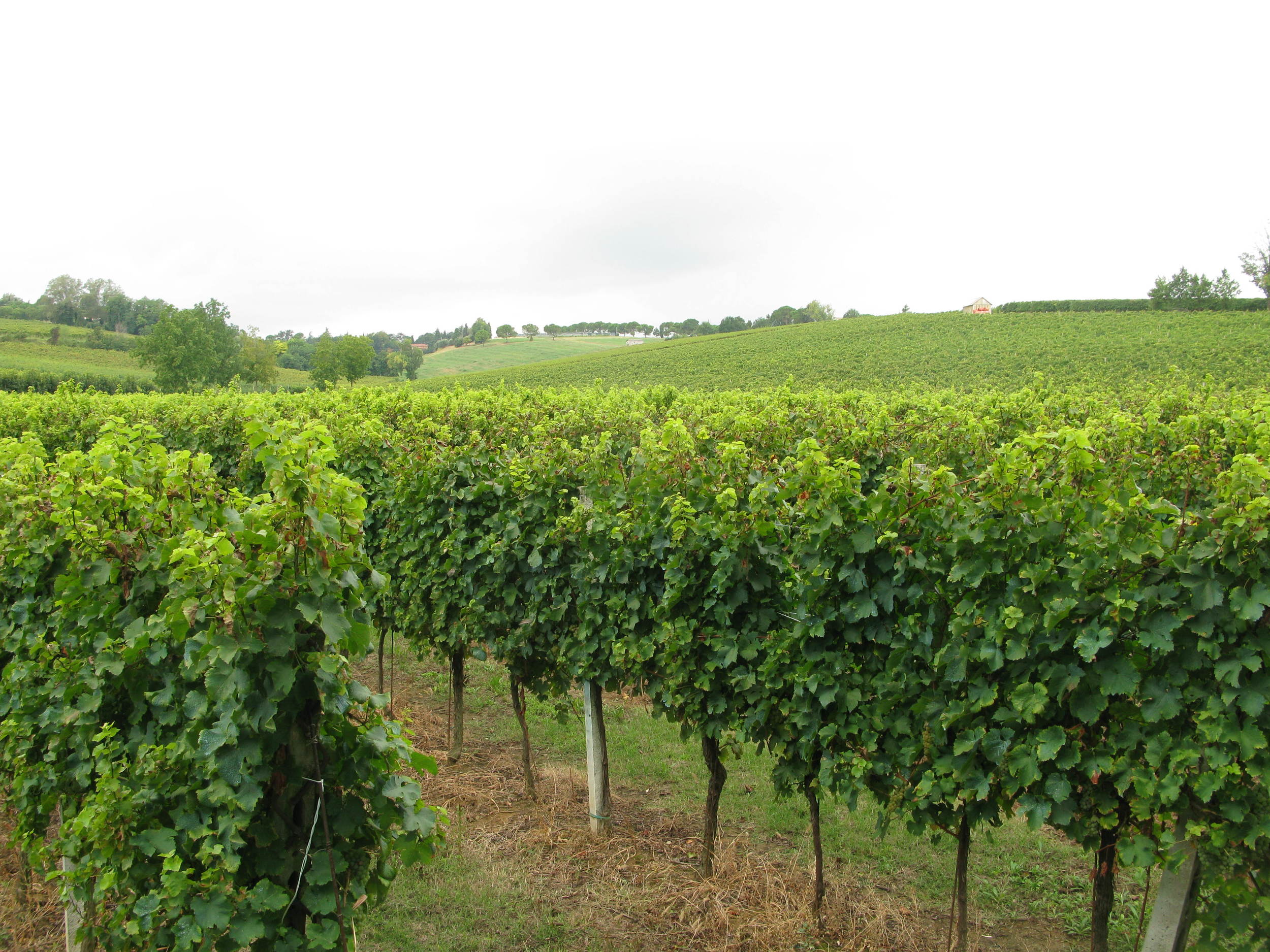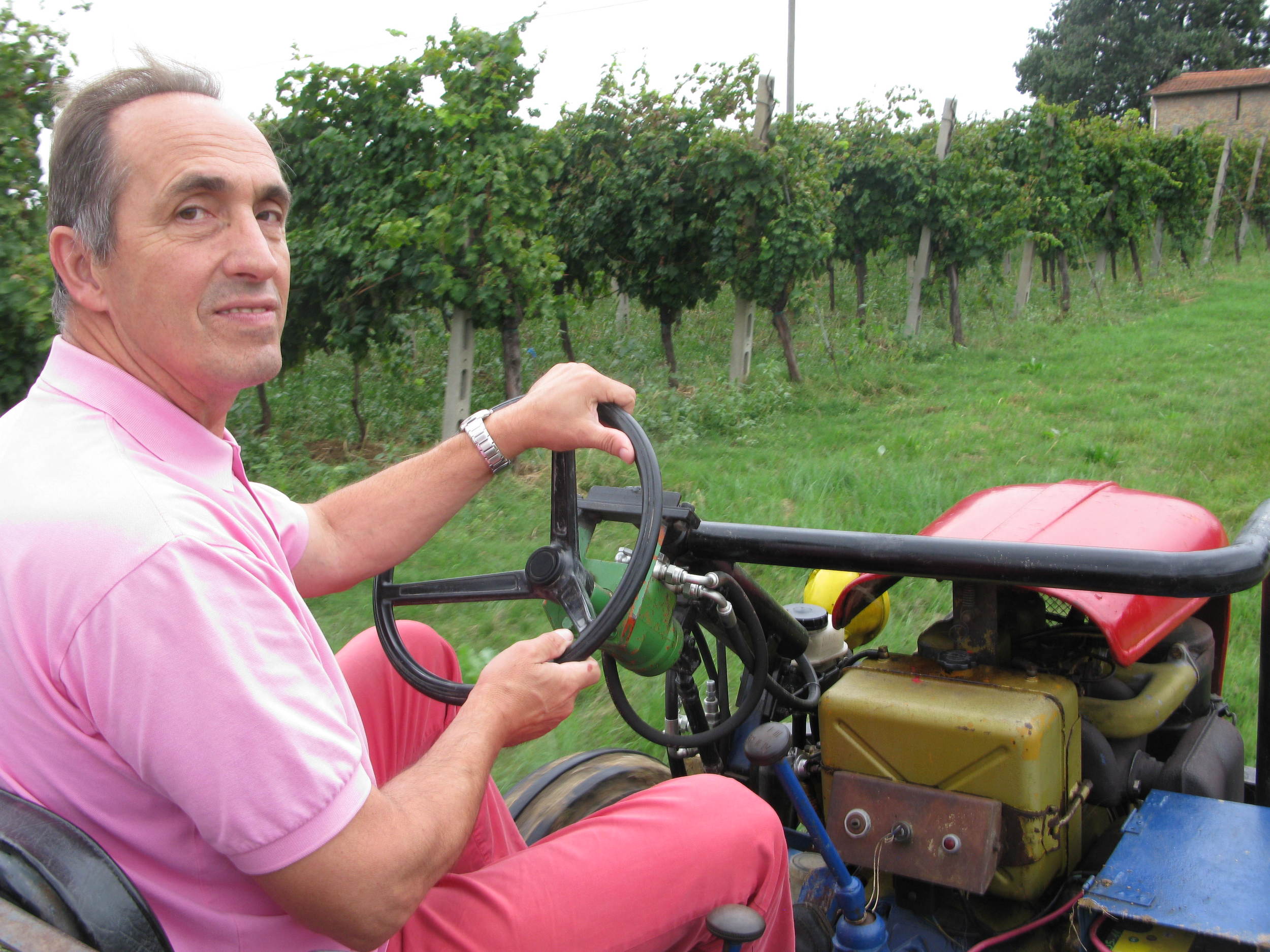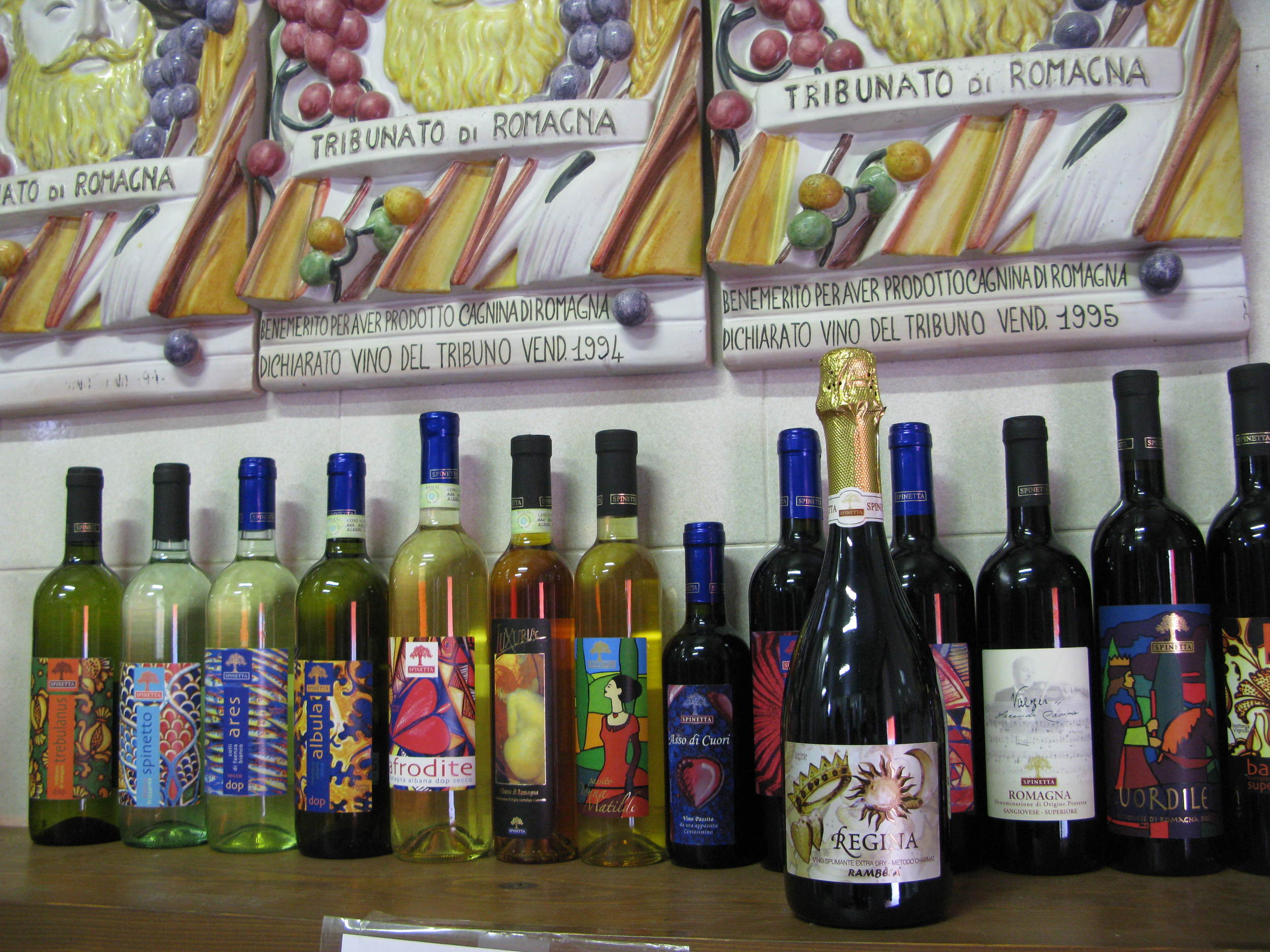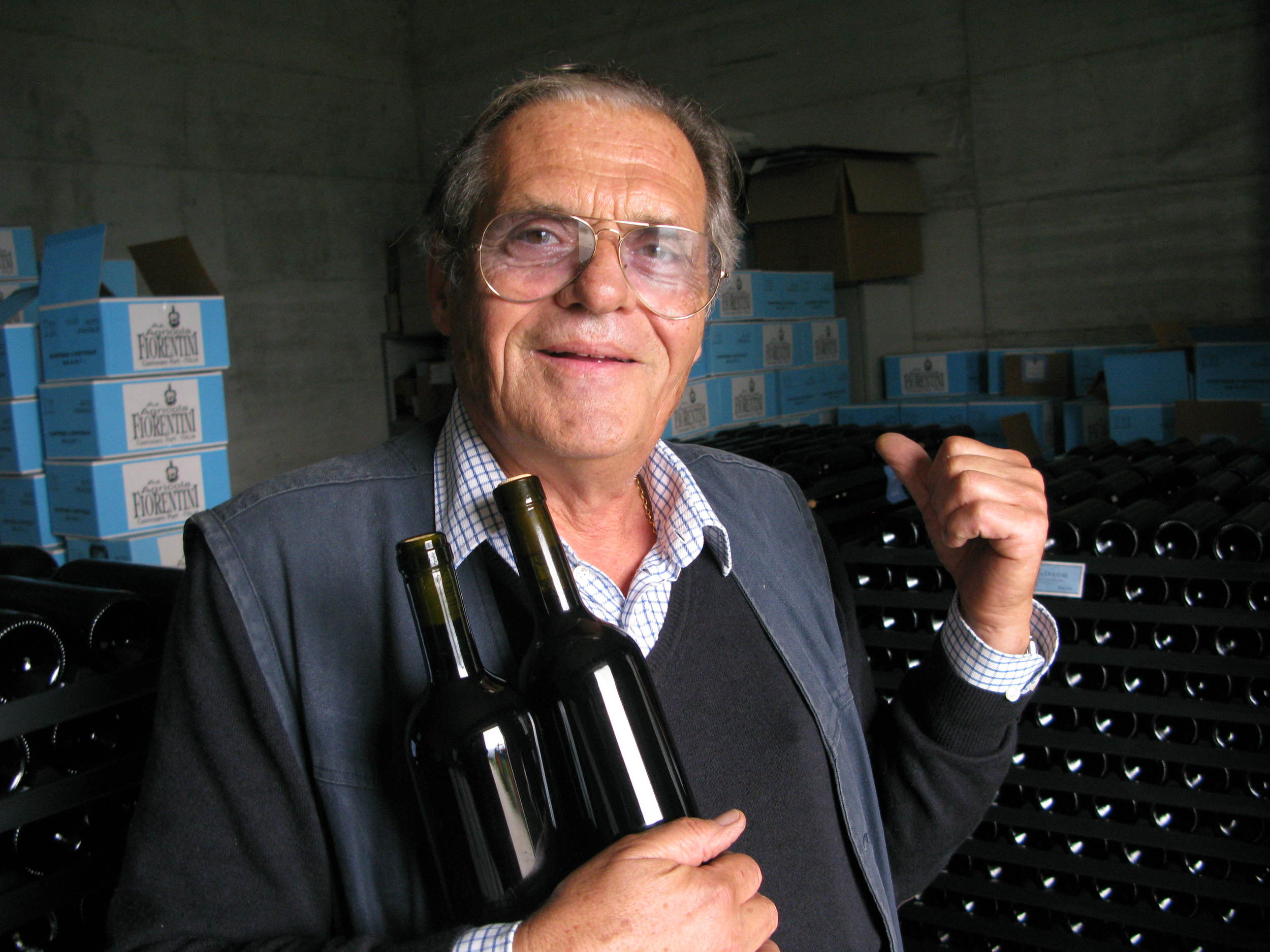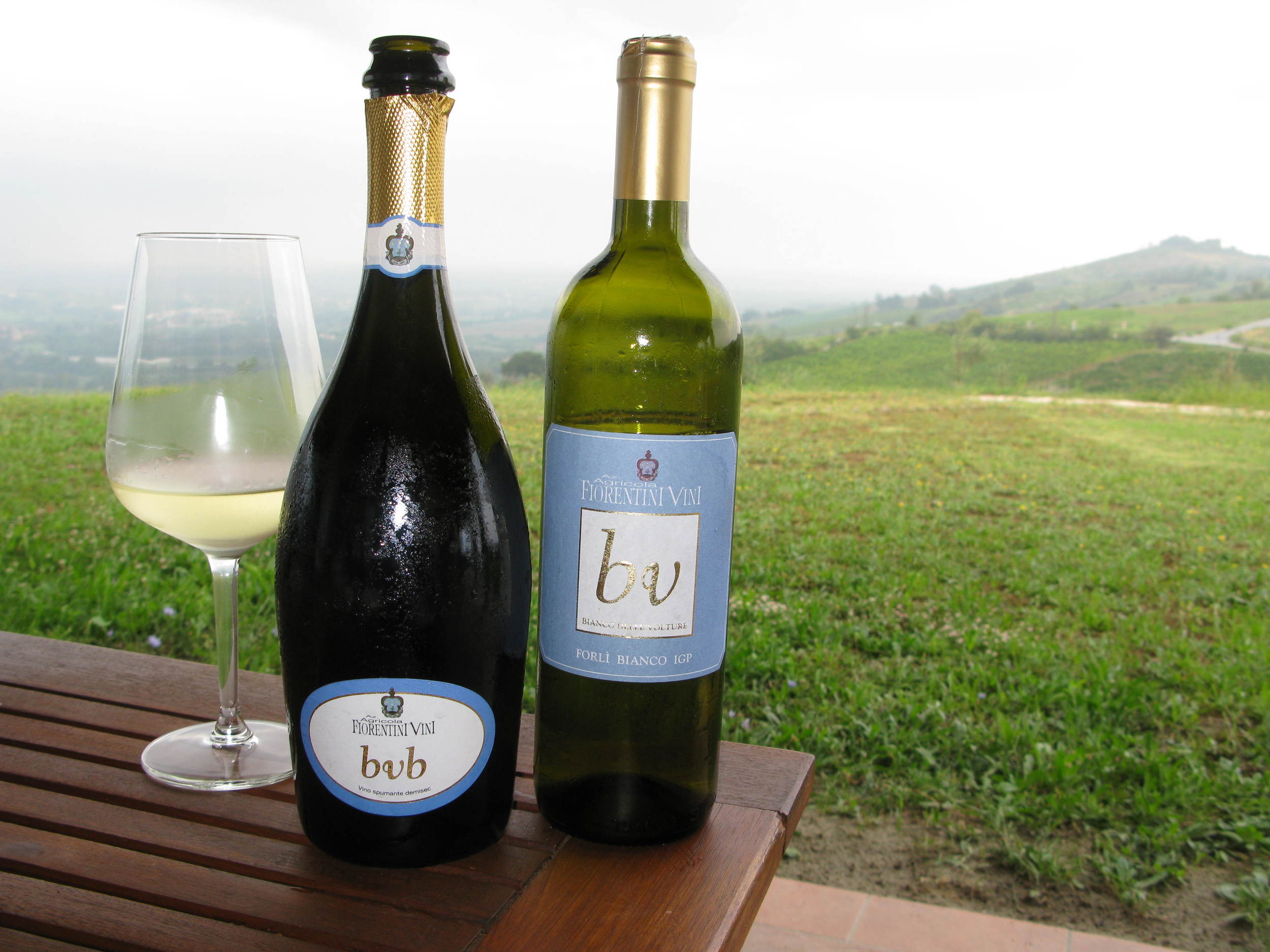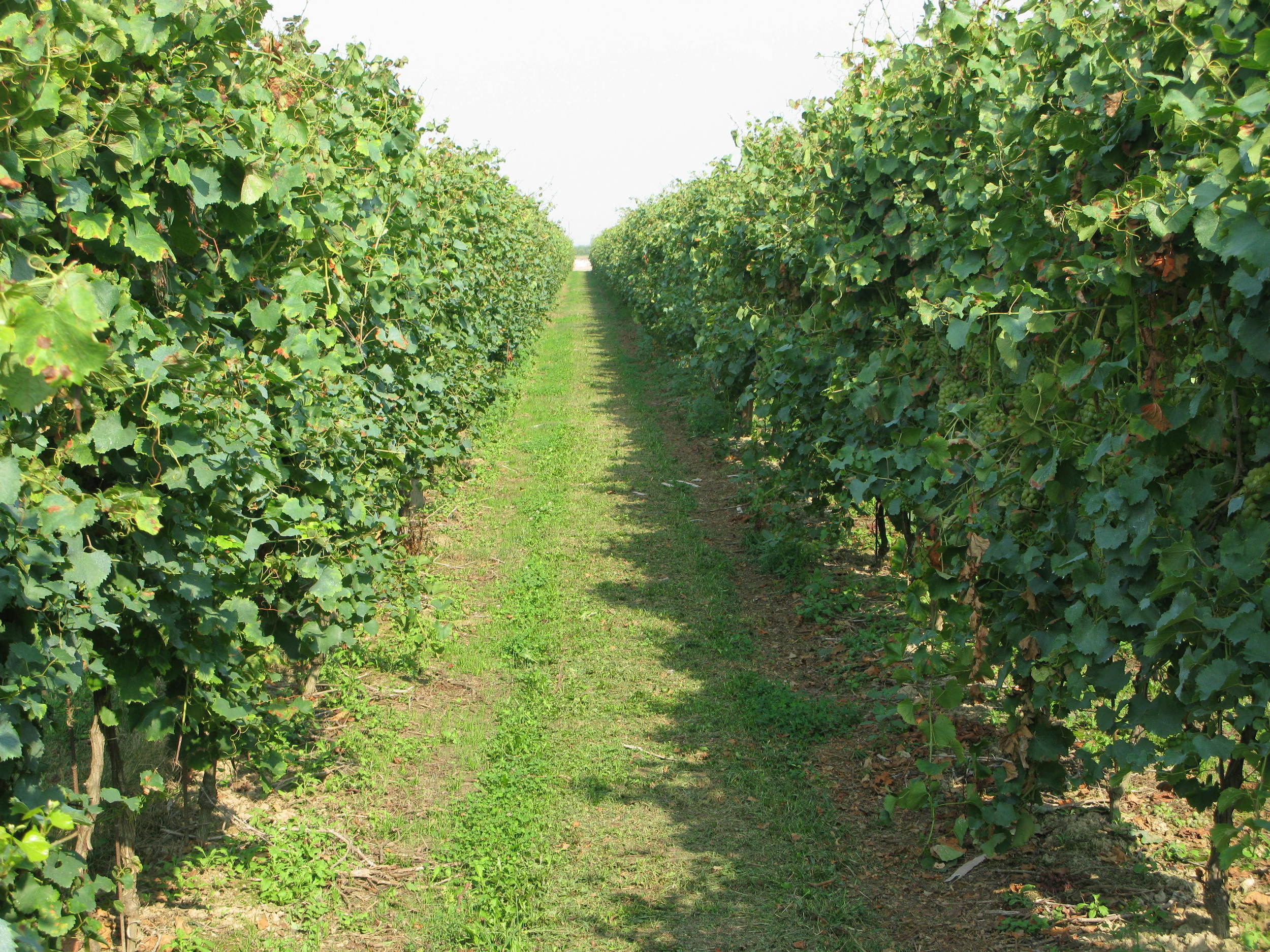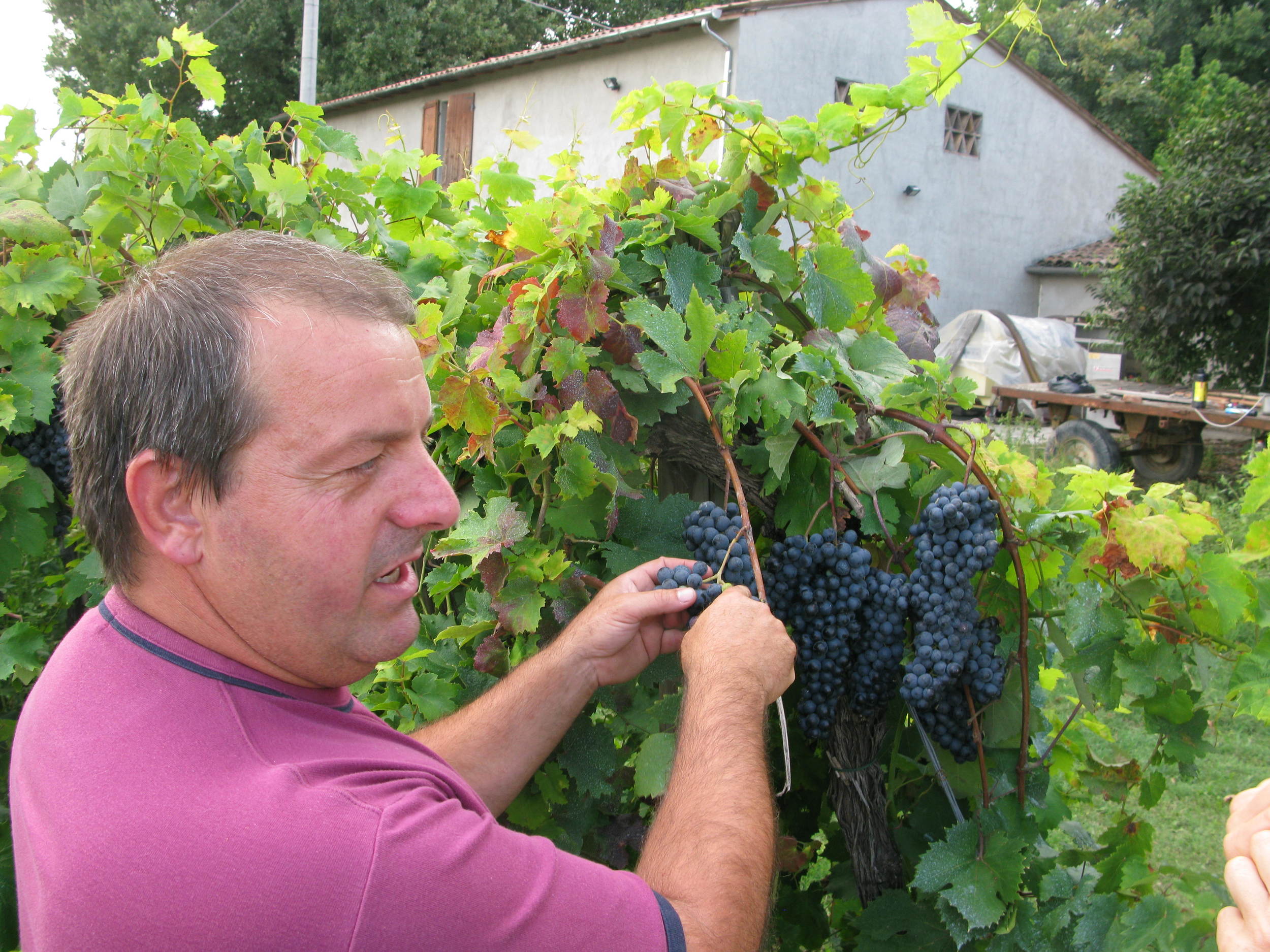Famoso means famous in Italian. It’s an odd name for a grape variety that isn’t even a footnote in the Vitis vinifera bible, Wine Grapes (by Jancis Robinson, Julia Harding and José Vouillamoz).
It was ignored because, in 2000, there were no commercial wines being made from this ancient grape variety and no hectares planted with Famoso vines. Although it was mentioned in tax documents as long ago as 1437, after phylloxera ravished Europe’s vineyards in the late 19th century it fell into decline and had almost disappeared by 2000. All that was left were two rows of vines yielding table grapes at the Montalto farm in Mercato Saraceno, near Forlì.
The discovery, however, inspired a band of local wine producers, with a passion for indigenous grape varieties, to experiment with the vines, the wine and to join together to save the variety. They liked the grape’s toughness, the wine’s distinctive floral aroma and light acidity, saw its potential for producing a top quality white wine and started the legal process to get the variety registered. It became an official Italian grape variety in 2009 and is being considered for the next edition of Wine Grapes as the 2010 census of Italian wine grapes shows there are 6ha planted and a growing number of commercial producers making wines from this big-berried, loose-bunched, early-to-mid ripener.
On a recent trip to the region I counted 11.25ha planted and heard of more in the pipeline. What surprised me most during this trip, though, was the level of experimentation. I tasted it as a Champagne-style and Prosecco-style sparkler, as a dry, off-dry and sweet still wine. I tasted Famoso that had been matured in stainless steel and glass-lined cement tanks, and also in oak barrels. I saw bunches hanging from single and double Guyot training systems and from the region’s traditional pergola. These variations are expected in large regions with well-known varieties, but there are less than 10 serious Famoso producers, most of whom live within 20kms of each other, none of whom has more than 2ha to play with, and all are using the same clone.
The main reason for the experimentation seems to be to either enhance or tame the grape’s distinctive sweet floral and exotic fruit aromas – linden flowers, hawthorn and orange blossoms mingled with banana, peach, green apple and apricot. As it offers so much on the nose, the winemakers are also experimenting to make sure the wine delivers in the mouth, too.
This starts in the vineyard by reducing yield with green harvesting and continues in the winery with lengthy periods of bâtonnage. The aim being to add some complexity to this soft, elegant, moderately acidic, medium-bodied wine.
The first winemaker I met on this tour of Romagna, Mauro Altini, uses the Charmat method and stainless steel or glass-lined cement tanks to preserve the grape’s aroma and its fruit flavours. Like most of the wineries in the region, La Sabbiona is also a farm. Mauro’s 28ha in Oriolo dei Fichi, south of Faenza, grows a variety of fruit – apricots, peaches and olives – alongside 15ha of grapes. Only 2ha is fathering Famoso. His other grape varieties include the region’s main white, Trebbiano, and its key red, Sangiovese. Then there are the indigenous white Albana di Romagna and the indigenous red Centisimino plus small quantities of the international varieties Syrah and Malvasia.
At the farm, which incorporates a 17th century farmhouse offering B&B and an 11-year-old winery with shop, Mauro makes 5,000 bottles of sparkling Famoso (Divo) and 4,600 bottles of still VIP. “It is difficult to sell more bottles, it is an unknown grape,” he tells me, as we tour the vineyard.
Underneath our feet, the soil is mostly clay and sand with a dash of lime. Around us are the hills that lead to the Apennines, the mountains that separate Emilia-Romagna from Tuscany.
Mauro was among the first to make the wine, in 2007, after grafting Famoso scions onto established Pagadebit (another local variety) vines. “I was impatient to see what it tasted like,” he said. And the 41-year-old, who has been making wine since he was 15, liked what he found: “It was strange for Emilia-Romagna because we don’t have such aromatic wines here. It was a big surprise.”
His methods are fairly typical of the winemakers who want to maintain the floral and fruit aromas and fresh fruit flavours. He destems, crushes, and softly presses the grapes (at 0.2-0.8 bar). He chills the juice to 5°C overnight before starting the fermentation with yeasts that will enhance the grape’s characteristics. After about 20 days of cold fermentation in stainless steel tanks, he racks the wine to his yellow-painted cement tanks. For the first six weeks or so he will stir the light lees to help improve mouthfeel and structure. When it tastes as he wishes, he sends the wine away to be bottled (generally between the ends of April and June). He thinks he may have to store his 2014 Famoso a little longer, after a poor, wet summer.
Mauro’s friend Claudio Ancarani was also among the first wave of saviours – planting in 2006, making some experimental batches in 2009 and bottling 2010’s vintage. Claudio and his father Serafino have 17ha under vine around Santa Lucia, of which 2ha are Famoso – the second hectare planted earlier this year, with more planned in a field currently growing wheat.
Claudio chose to make Famoso because having an aromatic white wine is “a new story for me”. What he likes is the way the aroma changes – as the wine ages it becomes less floral and more mineral. The roses are replaced by wet stones.
The Ancarani winery, started in 1992, was expanded in 2004 and has plenty of spare capacity... if Famoso ever lives up to its name. As we tour the vineyards and admire the view of the medieval Oriolo tower, where you can buy his and other local wines, I am left with the impression that he grows Sangiovese because he has to but his passion is for the indigenous varieties, especially Albana, Famoso, Centesimino, and Uva Longanesi. We stop by a row where the grapes look grey from rigor mortis. It’s Uva Morta, another variety that he really is bringing back from the dead.
Treading the rows previously tended by his grandfather and now worked by his father, we examine the new and established Famoso vines. They seem to be hedging their bets as far as trellising goes, using both a single Guyot system to give the grapes “room to breathe and dry” while also trying out the area’s traditional pergola system – the one that’s so effective for the long Albana bunches – in case his ancestors knew best.
The ‘secret’ to producing a good Famoso, Claudio believes, is to reduce production in the vineyard and harvest at the right time – when the fresh acidity and floral aromas are in balance. The main difference with his Famoso Signore is that he tries to get the fermentation started with yeast from the grapes. If that doesn’t work he’ll add a “neutral” yeast. He, too, ferments in stainless steel and stores in cement because he likes concrete’s insulating properties. “The changes are much better slower – it’s better for the nose,” he says while opening a bottle decorated with two of Raphael’s Three Graces – with the naked bottom stuck on separately.
I sit back and enjoy the wine, confident that I could identify Famoso in a flight of aromatic whites. Then I visit the third of the original saviours, Leone Conti. Leone is a maverick, a larger-than-life character with wines to match. He likes the grape... but not the aroma. For him, the floral notes are too much. But neither is he a fan of the mineral aromas that come with age. So, for both his still and sparkling versions, he uses techniques that paint over the perfume. He uses the Champagne method for his recent venture into sparkling wines and he uses barriques for his still version. He has also put Famoso in amphora – an experiment which, he admits, didn’t work (although it has produced a successful Albana).
It was Leone’s grandfather who started the family winemaking tradition in 1900, with the family moving to the current, larger site in Santa Lucia in 1950. Leone has been working there since 1988 and took charge in 1994. He now runs the business with his American partner Coral McGill and nephew Gianfranco Conti. They have 17ha of land, which includes 3.5ha of olives and 1.5ha of Famoso producing 4,000 bottles a year. His Famoso grapes are sandwiched between rows of Albana and Ruggine, with the bulk of his annual output of 80,000 bottles coming from Albana and Sangiovese vines.
The Contis have 2,100 bottles of classic-method Famoso resting in cages and being riddled by hand. “Famoso is good for sparkling because it has good acidity, not high alcohol, low pH,” Leone says.
The winery has been extended recently, using lots of glass and wood, and the power comes from solar panels. The farm is also in the process of becoming organic. “We trust a lot in traditional methods,” Leone says, as we settle into the tasting room to sample his 2011 and 2012 Famosos. The floral notes and fruity flavours have been coated with vanilla and butter. They are nice wines; the 50% old/50% new oak add an interesting twist… but they are not Famoso as I know it.
“We prefer to work with less floral, more structure,” Leone says. “Oak gives it better evolution.”
These are the oldest Famosos I have tried. The 2011 is from a bottle decorated with dogs “because wine should be fun”. The 2012 was awaiting bottling in a tank. His 2013 and 2014, which weren’t good years, will have to spend more than a year in barrels, Leone predicts. The 2011 and 2012 were also very different. Leone is pleased with this because they “express the year. I don’t want them all to be consistent.” He treated them differently too: the 2011 had more bâtonnage while the 2012 was left to “rest on the lees”.
Leone’s neighbour Luciano Monti was machine-harvesting his Sangiovese when I arrived at his farmhouse. The Spinetta farm has been in the family for so many generations that Luciano has lost count. Luciano has been working the 23ha since he was 14, growing a real mixture which includes Albana, Chardonnay, Sangiovese, Merlot, Gewürztraminer, Trebbiano, Centesimino, Cabernet Sauvignon and Cagnina, much of which is sold directly from the tanks in the winery’s shop or in kegs to restaurants. His top wine is his Bursôn, made from another indigenous red grape variety, Uva Longanesi.
He has 1ha of Famoso vines, which he hand-harvests to make 3,000 bottles of a light, refreshing, fruity spumante. So proud of it is he that he has named it after his wife, Regina. Luciano believes in Famoso’s potential as a Charmat-method sparkling wine because “it has the perfume and taste that is good for spumante”. The wine’s label features artwork from a local ceramicist – one of the region’s other claims to fame.
My fourth visit was to one of the Famoso newcomers. Fiorino Fiorentini is a retired hospital doctor who started producing a small quantity of Famoso wine two years ago (having made Sangiovese since 1996). Making wine, he says, is his hobby, “but I have never worked so hard”. His claim to fame is: “I’m the only one in the world making demi-sec sparkling Famoso.” He adds: “It is not commercial but I like it and all my female friends like it a lot.”
His surgically-clean, four-year-old winery is built on to an old house that overlooks the ancient towns of Castrocara and Terra del Sole. It’s the highest vineyard site I came across producing Famoso. It’s 12 turns up “the first hill of the Apennine mountains”. And so steep he needs a caterpillar tractor to tend his 2,000 double-Guyot-trained Famoso plants, which cover an area of about 0.25ha and produce about 1,333 of his total yearly output of 10,000 bottles. Here, he says, the vines suffer “wind, sun and drainage”. But this, he says, helps to improve the body while the “sea air” boosts the minerality.
The 69-year-old former doctor says he is doing his bit to save the variety “because I am a fan of Romagna. Romagna is not Italy, it is Romagna.”
Emilia-Romagna is one of Italy’s oldest wine regions, with a viticultural heritage that dates back to the 7th century. Today it has more than 55,000ha under vine and accounts for about 15% of Italy’s wine production.
In its plains, between the River Po in the north and the Apennine Mountains in the south, the grapes ripen a couple of weeks later than in the hills. Here, north-east of Faenza, the grapes grow on more fertile soil alongside peaches, pears, apples, wheat and corn.
Here, Famoso shows it is capable of adapting to a variety of soils and mesoclimates, and also adapts to passito winemaking techniques.
Here, around the charming town of Bagnacavallo, about 20km from Oriolo dei Fichi, is another enclave of winemakers who are trying to make Famoso famous – but under its ancient local name, Rambéla.
At the Randi family’s 60ha farm near the small town of Fusignano, two-thirds is under vine, of which Trebbiano makes up about half. These grapes are destined for the local co-op’s wines, while Massimo, Luigi and Denis Randi concentrate on making wines from Uva Longanesi (7ha), Famoso (2ha planted in 2006, more planned) and Marbo Gentile (1ha for a special passito wine).
The father and sons team has been making Famoso since 2009, when Famoso became an official Italian grape variety. To tame the more fertile farm soils, they use a cordon training system (‘cordone speronato’). They make an easy-drinking Rambéla and a passito wine from grapes harvested early and dried indoors in crates for 60-70 days before being vinified and matured in French barriques for a year.
“Famoso is wonderful news for the region,” one of the sons, Massimo, tells me, using his hands far too much for my liking as we weave down a country road to find the site used for the passito Famoso, where the soil is less fertile and the bunches are smaller; where double Guyot replaces cordon.
“Why?” I dare to ask.
“Because my clients around the world, who buy my reds (especially the Amarone-like Bursôn) speak with me and ask for something different to Trebbiano. They want a new white wine.”
His Bursôn clients in Japan, USA, Canada, Brazil, Germany and Switzerland certainly seem to be lapping it up. “In five years (from 2009 to 2013) we have gone from 800 bottles of Famoso to 25,000 – for one type of white wine from Romagna (an area best known for Sangiovese).”
The main difference in Randi’s regime is that they stop the cold fermentation after 15 days to retain a couple of extra grams of residual sugar. The wine also only spends a month in stainless steel before being bottled. The 2013 that I tried had been bottled on 10/11/13.
This being Emilia-Romagna, food is important and the local wines (including Lambrusco) were created to match the local cuisine. Taken to lunch by the local consortium of winemakers, I am introduced to some wines from smaller producers and Famoso’s potential with food. There were sparklers from Lovatella (1ha) and Uccellina paired with cold pork cuts and soft cheese. Tenuta Uccellina’s bubbles came from its primary fermentation.
With the pasta course, tagliatelle with pork and beef meat sauce, there were four fresh, floral and dry Famosos; the ones from Randi and Fiorentini already mentioned plus one from Daniele Longanesi and another from Uccellina. The differences between them were very subtle. Slightly more flowers here (Uccellina and Randi), slightly more sugar there (Randi), slightly more alcohol here (Fiorentini at 13% whereas the others were 12.5%). All came in radically different bottle shapes. All corresponded roughly to the leading local oenologist’s view of what Famoso should be.
Sergio Ragazzini, who consults for the 19-member Bagnacavallo Consortium (set up to promote Bursôn) and its six Famoso producers, thinks the best recipe for Famoso includes bunch exposure to the sun, little skin contact before cold fermentation (15-17°C), storage in stainless steel or, possibly, concrete. Sergio, who was also at the lunch, said they have been trying for the past four years to realise the potential of the grape. “It’s an old grape that has been lost, but we know it offers a lot of potential, so we are experimenting because we think this wine can say something new for the territory,” he said. He thinks the products from the hills are more concentrated but this lunch proved you can make far from plain wines in the plains, too. It may be more difficult but it is possible.
For the meat course – chicken on a skewer with tomato sauce and potato wedges – they wanted to introduce me to Bursôn, this area’s real specialty. There are two types of Bursôn: blue label from non-dried grapes and black label from 50% dried grapes plus more than two years of aging in wood. Bursôn is the Romagna nickname of the family that discovered the grapevine growing up an old oak tree near the house Antonio Longanesi built in 1913. By 1956 his sons, Antonio and Peter, had realised it produced lovely juicy berries and was resistant to fungal diseases, so they planted the first vineyard. With the vine producing a lovely dark red wine with an alcohol content of 14%, it wasn’t long before neighbours and friends started asking for cuttings. In 1999 Uva Longanesi was identified as a distinctive grape variety and became listed as an Italian red wine variety in 2001.
I tasted two black label versions with my lunch. One was from Randi and the other from Daniele Longanesi, grandson of the man who found the variety. Its main characteristics as a wine are high alcohol and intense ripe fruit aromas and flavours.
A selection of local cheeses was accompanied by sweet Famoso wines from Randi (Strafamoso) and Daniele Longanesi (Decimello). It’s the second year Randi has made a sweet wine from Famoso, but the first for Daniele.
Daniele, the president of the consortium, has inherited his family’s passion for local varieties and has been making Famoso for two years after planting the vines in 2009 because he was looking for a native grape to use for higher quality white wine. “Trebbiano is for poor people,” he said.
He has 4.5ha of vines in total and 1.5ha of Famoso. This year he hopes to add 2,000 bottles of fizzy Famoso to his 3,000 bottles of still and 1,000 (0.5L) bottles of sweet.
He recently had an American importer visit his farm at Boncellino and try to place an order for 25,000 bottles of Famoso. It has given Daniele the confidence to up his output with fruit from friends, neighbours and other family members, and he aims to reach 20,000 bottles in the next few years.
Warmed by the high quality and diversity of the Famoso wines I have tasted in Romagna, I begin to wonder why such a wonderful-tasting, high-yielding, distinctively-aromatic, thick-skinned, disease-resistant grape almost became extinct. No one knows for sure. It could be that it produces a fairly insipid wine when the yields are high. It could be that 20th century winemakers didn’t like its distinctive perfume, which makes it difficult to blend with other varieties.
One thing I do know is that I came to Romagna to sample a grape that wasn’t yet famous despite its name, and discovered a whole host of even less famous grape varieties... Uva Morta at Ancarani’s farm, Balsamina at Daniele Longanesi, and Termarina and Ruggine at the Contis’ place.
Perhaps this is why Famoso became neglected: Emilia-Romagna has such a wealth of grape varieties and when I asked all the producers to name their favourite varieties, none said Famoso. Mauro Altini “loves” Centesimino because he can do so much with it – sweet, barrel, rosé, red; Luciano Monti chose Centesimino because it is “typical of this area”.
Claudio Ancarani’s first love is Albana because “the love for it runs in the family”. Leone Conti selected Albana because “it is the most important white grape in the region and was the first DOCG for white wines in Italy.” Massimo Randi has “a passion for Malbo Gentile”.
Famoso did, however, make all of their top 3s. And I certainly got the impression they are having fun experimenting with it until they hit upon the recipe that will make Famoso famous. Well, almost.


